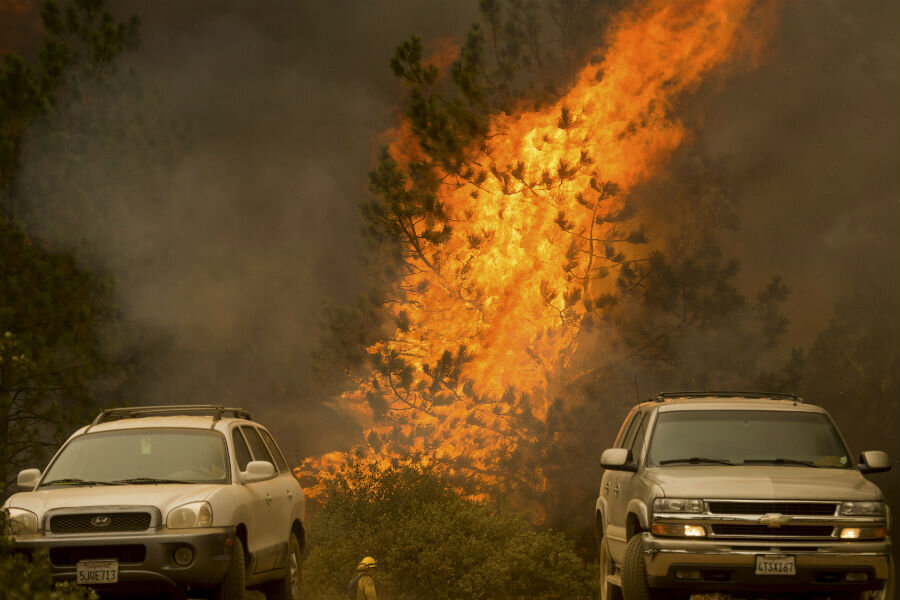Four firefighters injured in northern California wildfires: Is relief on the way?
Loading...
The wildfires raging in northern California injured four firefighters early Sunday.
The firefighters, who had been dropped off to the fire's front line by helicopter, suffered burns as they built containment lines, said California Department of Forestry and Fire Protection spokesman Daniel Berlant.
All four were airlifted to UC Davis Medical Center in Sacramento where they were listed in stable condition, Berlant later said on Twitter.
Thousands of people in the region have evacuated their homes, with some forced to abandon their animals, as firefighters worked to contain what has been dubbed the Valley Fire, which as of this writing is only about five percent contained. As of Sunday morning, the fire had rapidly expanded to cover about 25,000 acres since it erupted on Saturday afternoon in Lake County, north of San Francisco, the California Department of Forestry and Fire Protection said on its website.
About 100 miles to the southeast, the so-called Butte Fire has destroyed 86 homes and 51 outbuildings in rural Amador and Calaveras counties, where it covers an estimated 65,000 acres, Reuters reports. It is only 15 percent contained.
Thousands of residents in the area were required to evacuate on Friday, as the blaze threatened what officials estimated was more than 6,000 structures.
Gov. Jerry Brown declared a state of emergency, helping free up funding and resources to contain the fires. More than 3,850 firefighters were assigned to the blaze, and more expected to arrive throughout the day, according to the Associated Press.
Evacuation orders expanded Saturday for the largest wildfire in the state, threatening to sweep through an ancient grove of Giant Sequoia trees. The fire, sparked by lightning on July 31, has charred 201 square miles, according to the latest fire map released by the US Forest Service, the AP reports.
Firefighters are clearing brush with bulldozers around Grant Grove and putting up sprinklers, according to Andy Isolano, a spokesman for the Clovis Fire Department, The Christian Science Monitor previously reported.
Mr. Isolano said the trees can survive a fire, but due to increased stress from the drought, firefighters aren’t taking any chances. The wildfire flames are moving quickly, but by Saturday, the threat lessened when it became clear that the us of prescribed burns (the containment of wildfires by clearing brush using planned fires) and monitoring efforts paid off, for now protecting the trees.
A government agency offers another reason for optimism in the face of one of the toughest wildfire seasons in history. The National Interagency Fire Center predicts normalizing conditions: fall-like moisture is expected throughout the northwestern US, the report stated, paired with cooler temperatures and considerably shorter days starting later in September. These factors can combine to reduce fire potential, according to the agency.






